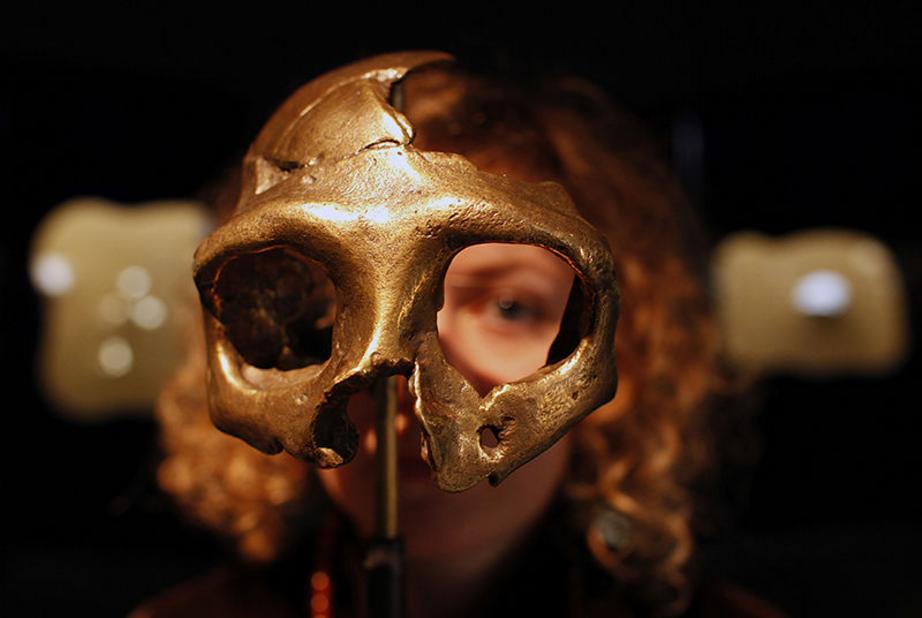Sex, power and ancient DNA
Turi King hails David Reich’s thrilling account of mapping humans through time and place.
As a field, ancient DNA is paradoxically young — just over 30 years old. And it is booming, thanks to ever-faster sequencing techniques and extraction protocols that can bait specific sections of human DNA out of the vast soup of non-human genetic material in ancient samples. Simultaneously, the field has grabbed the public imagination with findings about the distant past. One such finding was the revelation that people from the Beaker Culture significantly altered Britain’s population just 4,500 years ago. Another was the oldest ancient genome ever obtained: that of a 700,000-year-old horse, found in Canadian permafrost, that suggested the ancestor of all today’s horses, donkeys and zebras lived some 4 million years ago. I was thrown headlong into the intricacies and difficulties of the field by leading the DNA analysis of the remains of England’s King Richard III, discovered under a car park in Leicester in 2012.

A replica Neanderthal skull.Credit: Nikola Solic/Reuters
Few labs do ancient-DNA work. David Reich’s, set up in 2013 at Harvard Medical School in Boston, Massachusetts, was the first in the United States and is one of the most prestigious in the world. It is a juggernaut able to process hundreds of samples a year. Now, with Who We Are and How We Got Here, Reich gives us a window into what ancient DNA can tell us about human evolution, the peopling of the world, continent by continent, and the population mixing that makes us who we are today, genetically at least.
Reich’s team has developed some of the most sophisticated statistical and bioinformatics techniques available. Using computers, they painstakingly reconstruct genomic information from fragments of DNA from ancient individuals. They then drill down in search of a new understanding of human history.
It was Reich’s lab that did the Beaker work of the headlines. Indeed, the group has been involved in many of the big findings in the field over the past decade, and it’s these that Reich discusses. For example, their work contributed to the startling discovery that Neanderthals interbred with the ancestors of all modern humans descended from Europeans, Asians and other non-Africans.
His group’s involvement in the genetic analysis of the hominins called Denisovans overturned previous findings based on mitochondrial DNA alone. The work showed that Denisovans and Neanderthals were more closely related to each other than to modern humans. The ancestral groups leading to modern humans separated from the population leading to both Denisovans and Neanderthals 770,000–550,000 years ago, pre-dating by some 100,000–400,000 years the split that led to Neanderthals and Denisovans. And it turned out that ancient Denisovan populations and the ancestors of modern New Guineans had interbred as recently as 54,000–44,000 years ago.
Reich also discusses ghosts in our past. Not all of the genetic make-up of ancient and modern humans can be explained by the current archaeological or historical record. Genetic analysis of ancient and modern populations predicts as-yet-undiscovered groups that must have contributed their DNA to future generations. For example, Reich’s lab found that Europeans were more closely related to Native Americans than to East Asians, and this couldn’t be explained by recent interbreeding. The researchers suggested that another, now-extinct, group of people must have existed more than 15,000 years ago, and contributed DNA both to the populations that led to modern Europeans and to those that led to modern Native Americans. The team named these people Ancient North Eurasians.
No physical proof of this ghost population existed. Then, another group, led by Eske Willerslev, published genome-wide data from a recent find. They fit. The remains of a boy from Mal’ta in Siberia, dated to about 24,000 years ago, became the type specimen for the Ancient North Eurasians: a ghost made, if not flesh, then at least bone (M. Raghavan et al. Nature 505, 87–91; 2014). Other ghost populations have been predicted. As each new type specimen is discovered, more pieces of the puzzle slot into place, and researchers can reach even further back in time.
Reich details many other studies: of the phenomenal spread of the Yamnaya from central Europe to Asia’s Altai Mountains some 5,000 years ago; of the Andaman Islanders and the populations of India; of ancient remains in North America, such as the 8,500-year-old Kennewick Man.
What his and other labs are uncovering is the tremendous degree to which populations globally are blended, repeatedly, over generations. Gone is the family tree spreading from Africa over the world, with each branch and twig representing a new population that never touches others. What has been revealed is something much more complex and exciting: populations that split and re-form, change under selective pressures, move, exchange ideas, overthrow one another. Genomics and statistics have drawn back the curtain on the sort of sex and power struggles you’d expect in Game of Thrones.
Reich also reflects on how his work can be misinterpreted by the public and those outside the field, in a heartfelt section that I can sympathize with. As soon as some genetic discoveries are published, they can become freighted with prejudices and polarized interpretations. We all belong to one species and we are all related. Yet when genetic differences between populations, for instance, are revealed, the media and interest groups can oversimplify and distort. Some pick and choose results to justify personal, and sadly often political or racist, beliefs. Others sweep the differences under the carpet. Yet, as Reich argues, we do need a non-loaded way to talk about genetic diversity and similarities in populations. This book goes some way to starting that conversation.
Who We Are and How We Got Here: Ancient DNA and the New Science of the Human Past David Reich Pantheon: 2018.
